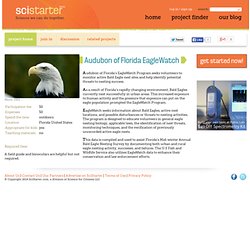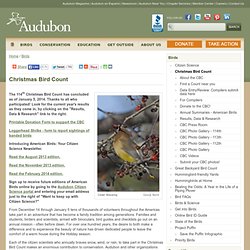

Summer Wild Turkey Sighting Survey on SciStarter. Ruffed Grouse Drumming Survey on SciStarter. The ruffed grouse is a forest species widely distributed across New York State.

While some grouse are found in more mature forests, the greatest population densities are in younger-aged forests. These preferred habitats are declining as most of New York State's forests grow older, thus resulting in a decline in grouse numbers since the 1960s. Turkey hunters in pursuit of that wary gobbler in the spring are ideally suited for monitoring ruffed grouse during the breeding season. The characteristic sound of a drumming male grouse is as much a part of the spring woods as yelping hens and gobbling toms. DEC currently monitors grouse populations in the fall through the Cooperator Ruffed Grouse Hunting Log where hunters record the number of birds flushed per hour of hunting effort. Birds in Forested Landscapes on SciStarter. Required Gear: Maps of your study area, binoculars, and a portable CD player to broadcast recordings of your study species.

The project provides a variety of field materials and aids at. Find the Swallow-tailed Kite on SciStarter. Who's Whoo-ing: Study Suburban Owls on SciStarter. Maine Owl Monitoring Program on SciStarter. Photo: NPS Required Gear: You’ll need some basic supplies, including a portable CD player, extra batteries, a flashlight, a watch or clock, a thermometer, a clipboard, extra pens/pencils, and warm clothes.

The Maine Owl Monitoring Program will provide the rest of the supplies. Those interested in volunteering can read the complete owl monitoring protocol for more details: Project Pigeon Watch on SciStarter. Cape Cod Osprey Project on SciStarter. Operation RubyThroat: The Hummingbird Project on SciStarter. Osprey NestWatch - Volunteer Monitoring Program on SciStarter. Audubon of Florida EagleWatch on SciStarter. Audubon of Florida's EagleWatch Program seeks volunteers to monitor active Bald Eagle nest sites and help identify potential threats to nesting success.

As a result of Florida’s rapidly changing environment, Bald Eagles currently nest successfully in urban areas. This increased exposure to human activity and the pressure that exposure can put on the eagle population prompted the EagleWatch Program. EagleWatch seeks information about Bald Eagles, active nest locations, and possible disturbances or threats to nesting activities. The program is designed to educate volunteers in general eagle nesting biology, applicable laws, the identification of nest threats, monitoring techniques, and the verification of previously unrecorded active eagle nests. This data is compiled and used to assist Florida's Mid-winter Annual Bald Eagle Nesting Survey by documenting both urban and rural eagle nesting activity, successes, and failures. National Audubon Society Birds. Georgi Baird Cedar Waxwing The 114th Christmas Bird Count has concluded as of January 5, 2014.

Thanks to all who participated! Look for the current year's results as they come in, by clicking on the "Results, Data & Research" link to the right. Printable Donation Form to support the CBC. Thanksgiving Day Western Bird Count on SciStarter. Golden Eagle Survey Project on SciStarter. New Jersey Audubon Shorebird Survey on SciStarter. New Jersey Audubon Grassland Bird Survey on SciStarter. West Virginia Breeding Bird Atlas II on SciStarter.
Watch for Robins! on SciStarter. MySwan on SciStarter. American Oystercatcher Banding on SciStarter. Praire Chicken Project on SciStarter. American Kestrel Partnership on SciStarter. Trumpeter Swan Watch on SciStarter. Greater Yellowstone Trumpeter Swan Initiative on SciStarter. Researchers at the Trumpeter Swan Society need volunteers to report their sightings of Trumpeter Swans in the Yellowstone and Rocky Mountain regions.

Why? By 1900 Trumpeter Swans were extirpated from their nesting and wintering areas in Central and Eastern North America. Their historic migrations to southerly wintering sites were totally destroyed. In recent decades wild nesting populations of Trumpeters have been successfully restored in several northerly states and Ontario. An unknown number are pioneering southward where they are beginning to establish use of more southerly wintering sites. By providing information through Trumpeter Watch, observers can help document the changing distribution of wintering Trumpeter Swans and help increase this vulnerable swan population. Bird Atlas 2007-11: Mapping Britain and Ireland's Birds on SciStarter. British Trust for Ornithology on SciStarter. You can be a BirdSleuth! — BirdSleuth. The Great Backyard Bird Count on SciStarter.